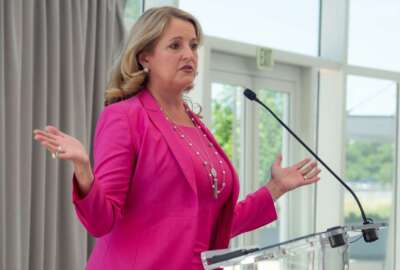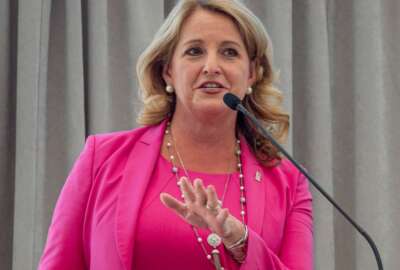
Former federal CIO Kent reflects on her tenure, accomplishments, biggest frustrations
Suzette Kent, who recently left after more than two years as the federal CIO, said lawmakers need to reconsider how they fund technology modernization efforts so...
For Suzette Kent, among the biggest frustrations of being federal chief information officer for more than two years was how Congress viewed IT modernization.
While a handful of lawmakers understood what it takes to move agencies off legacy systems, Kent said most saw it as a one-year project.
Kent, who left her position as federal CIO earlier in July, said changing the funding model for technology is among the biggest impediments to modernization.
“The way that we fund and resource — and I’m not just talking about money, but people, mindshare and the commitment of the agency — technology inside the government is not aligned with the way Americans live and where we need to be as a world power,” Kent said during an exit interview on Ask the CIO. “What I mean by that is we still fund in single-year increments. We still fund like a project has a finite start and stop date. It does not. Just like we have to continually fund the refurbishments of our national parks or our roads, our technology infrastructure is no different.”
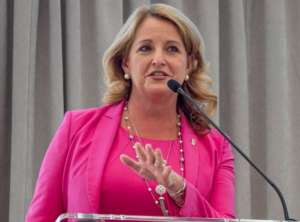
Kent said that kind of mindset is “infuriating” because there are always calls to modernize, but it takes multi-year commitments.
“If you are not going to fund directly. If you are not going to fund the Technology Modernization Fund. If you are not going to allow agencies to have working capital funds, then I guess those magic wands will get passed out somewhere because there has to be a mechanism,” she said. “Right now, there is not a sustainable mechanism. If we have Congress on one side asking for modernization they have to help with the tools on the other side to ensure that can be delivered.”
These frustrations are not new for anyone who has been the federal CIO.
Back in 2010, then-Federal CIO Vivek Kundra’s 25-point IT modernization plans called to change the funding model. That was one of the areas he made little progress toward.
Tony Scott, the federal CIO from 2015 to 2017, pushed hard to create the TMF, saying agencies had at least $7 billion in technical debt they needed to address, and asked for $3.1 billion in additional funding.
Mark Forman, the administrator of e-government and IT under the President George W. Bush administration, didn’t depend on Congress to fund IT modernization, but relied on a little-used power called a Clinger-Cohen letter to move money to pay for improvements.
Karen Evans, the current Department of Homeland Security CIO and former e-government and IT administrator under the Bush administration, also requested hundreds of millions of dollars for the e-government fund — only for Congress to come back with less than $50 million over her six-year tenure.
Results matter, not technology
Kent said she met with lawmakers many times over the last two years to help them understand whey technology funding is a lifecycle investment.
“These are pretty well known and consistent cycles whether you talk to a vendor or an agency. Yet we don’t behave like that and there are expectations that we are getting away from legacy systems, that we are improving digital service deliver, that we are improving cybersecurity. We are doing some of those things. But I would argue it’s not fast enough,” she said. “When you say Congress that’s a lot of people. I’ve had some very effective conversations with those who understand technology and they have been phenomenal supporters. There are many who embrace what the journey needs to look like. But there are others when it comes down to funding or resourcing or making those things a priority, somehow some of those concepts don’t necessarily make the list.”
One way Kent said she and other agencies were able to begin to chip away at those barriers to understanding the lifecycle of technology is by presenting lawmakers with the results of technology modernization versus the software or hardware.
She said agencies must tie those mission outcomes together in a way that is meaningful to representatives’ and senators’ constituents.
“That’s really what we have to do more of is not speak our own language but talk about results delivered,” Kent said. “One of the things I always tried to do when I was having a conversation was tie back agency results to how it impacted their jurisdiction or state, or how many citizens were impacted by XYZ. So we are tying it to something they and their constituents will care about because that’s the job they are asked to do.”
While Kent’s success in moving Congress as a whole to fund the TMF or approve working capital funds was limited, she did make a lot more progress in removing policy and other barriers to make it easier for agencies to modernize technology.
Released the pressure valve
During her first year on the job, Kent focused on revising old policies or getting rid of those that are outdated.
During her second year, she released the “pressure valve” so agencies could move faster.
“There was a structure that would ensure the policy stayed current, whether that was specific dates in the policy, whether that was a committee or group or whether it was as review timeframe,” she said.
Another major focus was shared services. Before Kent left government, OMB finalized the Treasury Department as the Quality Service Management Office (QSMO) for financial management, and the General Services Administration as the QSMO for civilian human resources transaction services. OMB named DHS as the cyber QSMO in April.
She said the fact that agencies hadn’t moved en masse to shared services was surprising.
“It’s one of the things I wish I could’ve spent more time on,” Kent said. “But I think the strategy that we laid down where we have a defined process for standards but also a customer-focused way to ensure that the marketplace is being managed and it has lots of solutions in it, and it has mechanisms to keep those current.”
Data reskilling academy coming
Another accomplishment Kent pointed to was the Federal Data Strategy. She said it’s a critical foundation for how agencies prepare to better serve citizens, but move to artificial intelligence, advanced automation and machine learning.
“If you don’t make the right investment in foundational activities in understanding and ensuring the data is right, it’s maintained, it’s current, it’s not biased, you protect civil liberties, then you are not going to drive the right outcomes with the better technologies,” she said.
Throughout her tenure, Kent said she tried to be transparent, accessible and a willing listener. She said the expanded influence of the CIO Council, the Chief Information Security Officer’s Council and the reinvigoration of the small agency CIO council will continue to address common challenges and push federal IT priorities forward.
She said the councils help advance topics like zero trust or a cloud sandbox or 5G.
“We did things like the reskilling academy for cyber. This year the team will be doing one for data,” Kent said. “They are using a proof point that there are models where we can be successful.”
As for her future, Kent said she will be back in the federal sector in some way. She said service has always been a part of her family and wants to continue to push for better, faster IT modernization and cybersecurity successes.
Copyright © 2025 Federal News Network. All rights reserved. This website is not intended for users located within the European Economic Area.
Jason Miller is executive editor of Federal News Network and directs news coverage on the people, policy and programs of the federal government.
Follow @jmillerWFED
Related Stories
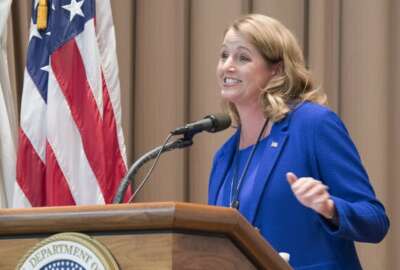
Federal CIO Kent brought vision, energy, leaves legacy of accomplishments

Advice for the new Federal CIO Suzette Kent from those who came before her
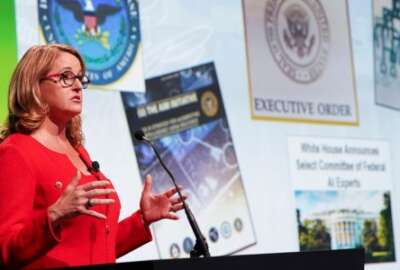
Over last 18 months, Federal CIO Kent’s goal is create a continuous improvement mindset
